Valley Precision Corner User Manual

Precision Corner
Owner’s Manual
0996070_G
© 2019 Valmont Industries, Inc., Valley, NE 68064 USA. All rights reserved. www.valleyirrigation.com

2

|
Table of Contents |
Precision Corner Owners Manual.................................................................................................................... |
1 |
Table of Contents.............................................................................................................................................. |
3 |
EC Declaration of Conformity.......................................................................................................................... |
7 |
Electrical Safety Statement.............................................................................................................................. |
8 |
About This Manual............................................................................................................................................ |
8 |
Ancillary Equipment Warranty......................................................................................................................... |
8 |
Safety................................................................................................................................................................. |
9 |
Recognize Safety Information.............................................................................................................................................. |
9 |
Safety Messages............................................................................................................................................................... |
9 |
Information Messages....................................................................................................................................................... |
9 |
Use of Personal Protective Equipment............................................................................................................................... |
10 |
Conductive Materials and Equipment................................................................................................................................. |
10 |
Fall Protection.................................................................................................................................................................... |
10 |
Minimum Working Clearance............................................................................................................................................. |
11 |
Qualified Person................................................................................................................................................................. |
11 |
Irrigation Equipment near Airports and Crop Dusting Aircraft............................................................................................ |
11 |
Overhead Power Lines....................................................................................................................................................... |
12 |
Minimal Lockout / Tagout Procedure.................................................................................................................................. |
13 |
Sequence of Lockout....................................................................................................................................................... |
13 |
Restoring Equipment to Service...................................................................................................................................... |
13 |
Operate Safely................................................................................................................................................................... |
15 |
Safety Decals..................................................................................................................................................................... |
19 |
Overview.......................................................................................................................................................... |
23 |
Introduction........................................................................................................................................................................ |
23 |
Overview............................................................................................................................................................................ |
23 |
Machine Components - Structural...................................................................................................................................... |
24 |
Machine Components - Operational................................................................................................................................... |
24 |
Main or Pivot Control Panel............................................................................................................................................. |
25 |
Last Regular Drive Unit Control Panel............................................................................................................................. |
25 |
Corner Angle Sensor Box................................................................................................................................................ |
25 |
Operator Interface Panel (OIP)........................................................................................................................................ |
26 |
Swing Tower Box............................................................................................................................................................. |
26 |
Steerable Drive Unit........................................................................................................................................................ |
27 |
Steering and Safety/Reference Antenna......................................................................................................................... |
27 |
Solenoid Valve Box.......................................................................................................................................................... |
27 |
Theory of Operation........................................................................................................................................................... |
28 |
LRDU and SDU Movement Controls............................................................................................................................... |
28 |
Corner Guidance Systems.............................................................................................................................................. |
28 |
GPS Guidance System................................................................................................................................................... |
28 |
Below Ground Guidance................................................................................................................................................. |
28 |
Corner Water Application Sequencing............................................................................................................................ |
29 |
Overview......................................................................................................................................................................... |
31 |
Control Panels................................................................................................................................................................. |
31 |
Valley Pivot with Precision Corner................................................................................................................................... |
31 |
Retrofit Valley Precision Corners..................................................................................................................................... |
31 |
3

Table of Contents |
|
Control Panels................................................................................................................................................. |
31 |
Pivot Control Panel.......................................................................................................................................................... |
32 |
Operator Interface Panel ................................................................................................................................................ |
33 |
Corner Interface Panel Capabilities................................................................................................................................. |
34 |
Diagnostic/Operational Status...................................................................................................................................... |
34 |
LED Display.................................................................................................................................................................. |
34 |
Corner Span Indicator Lights........................................................................................................................................ |
35 |
Corner Safety Fault Light.............................................................................................................................................. |
35 |
Corner Indicator Lights................................................................................................................................................. |
36 |
Auto Correct Procedure................................................................................................................................................... |
36 |
Corner Operating Controls.............................................................................................................................................. |
36 |
Machine Start/Stop - Forward/Reverse Rocker Switches............................................................................................. |
36 |
Swing Tower Steer In/Steer Out - Forward/Reverse Switches...................................................................................... |
37 |
Steering Override Button.............................................................................................................................................. |
37 |
Irrigate/Chemigate Rocker Switch................................................................................................................................ |
37 |
Sprinklers Test On/Test Off Switch............................................................................................................................... |
38 |
Variable Frequency Drive............................................................................................................................................. |
38 |
Pre Operation.................................................................................................................................................. |
39 |
Water Application............................................................................................................................................................... |
39 |
Sample Timer Chart........................................................................................................................................................ |
40 |
With Pressure Regulators or Flow Control Nozzles..................................................................................................... |
40 |
Without Pressure Regulators or Flow Control Nozzles................................................................................................ |
41 |
Hours Per Revolution - Actual............................................................................................................................................ |
42 |
Hours Per Revolution - Calculated..................................................................................................................................... |
43 |
Last Regular Drive Unit (LRDU) Speed.............................................................................................................................. |
43 |
Transducer Setting Charts.................................................................................................................................................. |
44 |
Corner Transducer Calculation........................................................................................................................................... |
45 |
Pressure Regulated vs. Non-Regulated Revolution Time.................................................................................................. |
46 |
Determining the Application Rate and Depth..................................................................................................................... |
47 |
Corner Machine with Regulators..................................................................................................................................... |
47 |
Corner Machine without Regulators................................................................................................................................ |
47 |
Percentage Timer Calculations Worksheet........................................................................................................................ |
48 |
Percentage Timer/Application Depth Worksheet................................................................................................................ |
49 |
Chemical Application.......................................................................................................................................................... |
50 |
Chemigate/Irrigate Switch............................................................................................................................................... |
50 |
Chemigate Mode.......................................................................................................................................................... |
50 |
Irrigate Mode................................................................................................................................................................ |
50 |
Chemigation Calculations Example................................................................................................................................. |
50 |
Chemigation Worksheet.................................................................................................................................................. |
52 |
Chemigation Safety......................................................................................................................................................... |
53 |
Exposure Routes.......................................................................................................................................................... |
53 |
Operation......................................................................................................................................................... |
55 |
Pivot Control Panels........................................................................................................................................................... |
55 |
Percent Timer / Pivot Panel Speed Control........................................................................................................................ |
55 |
Operator Interface Panel.................................................................................................................................................... |
55 |
Startup Procedure - Irrigation Mode................................................................................................................................... |
56 |
Shutdown Procedure - Irrigation Mode.............................................................................................................................. |
56 |
Wet to Dry Operation.......................................................................................................................................................... |
56 |
Wet to Dry Operating Procedure..................................................................................................................................... |
57 |
Operating Procedure for Chemigating............................................................................................................................. |
57 |
4

|
Table of Contents |
Maintenance.................................................................................................................................................... |
59 |
Safety................................................................................................................................................................................. |
59 |
Disconnect All Power....................................................................................................................................................... |
59 |
Wheel Gearbox.................................................................................................................................................................. |
60 |
Optional DualDrive Gearbox.............................................................................................................................................. |
61 |
Steering Gear Motor........................................................................................................................................................... |
61 |
Steering Gearbox............................................................................................................................................................... |
62 |
Wheel Lug Nut Torque..................................................................................................................................................... |
62 |
Tire Pressures................................................................................................................................................................. |
62 |
Barricade............................................................................................................................................................................ |
63 |
Wheel Tracks...................................................................................................................................................................... |
63 |
Miscellaneous.................................................................................................................................................................... |
64 |
Hose Replacement.......................................................................................................................................................... |
64 |
Electrical and Grounding Conductors.............................................................................................................................. |
64 |
Low Profile Offset Leg Bearing Lubrication..................................................................................................................... |
65 |
End Gun Arc Setting Example......................................................................................................................................... |
65 |
Annual Maintenance........................................................................................................................................................... |
66 |
Span................................................................................................................................................................................ |
66 |
Sprinkler.......................................................................................................................................................................... |
66 |
Steerable Drive Unit........................................................................................................................................................ |
67 |
Overhang/Booster Pump................................................................................................................................................. |
67 |
Span Flushing Procedure................................................................................................................................................... |
68 |
Winterization...................................................................................................................................................................... |
70 |
Parking the Machine........................................................................................................................................................ |
70 |
Troubleshooting.............................................................................................................................................. |
71 |
Important Information......................................................................................................................................................... |
71 |
Troubleshooting Overview.................................................................................................................................................. |
71 |
Error Codes........................................................................................................................................................................ |
72 |
Terms................................................................................................................................................................................. |
73 |
Tips.................................................................................................................................................................................... |
73 |
Span Sensor Safeties......................................................................................................................................................... |
73 |
Swing Tower Box Safeties.................................................................................................................................................. |
74 |
General............................................................................................................................................................................... |
74 |
Corrective Procedures - Operator Interface Panel............................................................................................................. |
75 |
Span Sensor Safety Fault Situation Table....................................................................................................................... |
75 |
Auto Correct Procedure...................................................................................................................................................... |
75 |
Situation #1, Er16 - Span Sensor Fault........................................................................................................................... |
76 |
Situation #2, Er16 - Span Sensor Fault........................................................................................................................... |
78 |
Situation #3, Er16 - Span Sensor Fault........................................................................................................................... |
80 |
Corrective Procedures - Swing Tower Box......................................................................................................................... |
81 |
Swing Tower Box Fault Situation Table............................................................................................................................ |
81 |
Situation #1, Er08 - Swing Tower Box Fault..................................................................................................................... |
82 |
Situation #2, Er08 - Swing Tower Box Fault..................................................................................................................... |
84 |
Situation #3, Er08 - Swing Tower Box Fault..................................................................................................................... |
84 |
Corner Sprinkler Test.......................................................................................................................................................... |
85 |
Test Procedure................................................................................................................................................................ |
85 |
Resetting the Over-Watering Timer................................................................................................................................. |
86 |
Additional Application Worksheets..................................................................................................................................... |
87 |
Percentage Timer/Application Depth Worksheet............................................................................................................. |
87 |
Troubleshooting List........................................................................................................................................................... |
90 |
5

Table of Contents
6

|
|
|
|
EC Declaration of Conformity |
|
|
|
|
|
|
|
|
|
|
We: Valmont Industries, Inc. |
Serial Number: |
|||
|
|
28800 Ida Street |
|
|
|
|
Valley, NE 68064 |
|
|
+1 |
402.359.6312 |
|
||
+1 |
402.359.6143 (Facsimile) |
Purchase Order: |
||
declare under our sole responsibility that the product,
Crop Irrigation System
to which this documentation relates, is in conformity with the following documents:
Machinery Directive 2006/42/EC
Low Voltage Directive 2014/35/EU
Electromagnetic Compatibility Directive 2014/30/EU
The above-referenced equipment is in conformity with all safety-related clauses (Not all clauses reflecting commercial preference are met) of the following documents:
EN 60204-1:2006 |
Safety of Machinery – Electrical Equipment of Machines |
EN 12100:2010 |
Safety of Machinery |
EN 909:1998+A1 |
Irrigation Machines |
Statement regarding Pressure Equipment Directive 97/23/EC:
The Crop Irrigation System is excluded from the scope of the Pressure Equipment Directive, by the language of Article 1, Sections 3.2, 3.6 & 3.10. This equipment is classified less than Category 1.
Statement regarding RoHS Directive 2011/65/EC:
The Crop Irrigation System is excluded from the scope of the RoHS Directive, by the language of Article 2, Section 4(e), being a “Large Scale Fixed Installation.”
Person Authorized to Compile the Technical File in Europe: |
Ruediger Claas |
Relevant information will be transmitted via email |
Valmont Industries Inc. |
in response to a reasoned request by national authorities |
Nordring 4 |
|
45894 Gelsenkirchen |
|
Germany |
|
+49(151)16716790 |
Ron Pollak |
Date of Issue: December 17, 2018 |
Senior Electrical Engineer |
Place of Issue: Valley, NE 68064 |
Valmont Industries, Inc. |
|
7

Electrical Safety Statement
About This Manual
Information contained in this manual applies to the Valley Precision Corner.
All information, specifications, descriptions and illustrative material contained in this manual were based on information available at the time this publication was approved for printing.
Valmont Industries Inc. reserves the right to change specification or design at any time without notice and without incurring any obligation. Specifications are applicable to equipment sold within the United States and may vary outside of the United States.
Ancillary Equipment Warranty
The owner is responsible for warranty registration of all ancillary equipment such as engines, pumps and generators with its respective manufacturer.
8
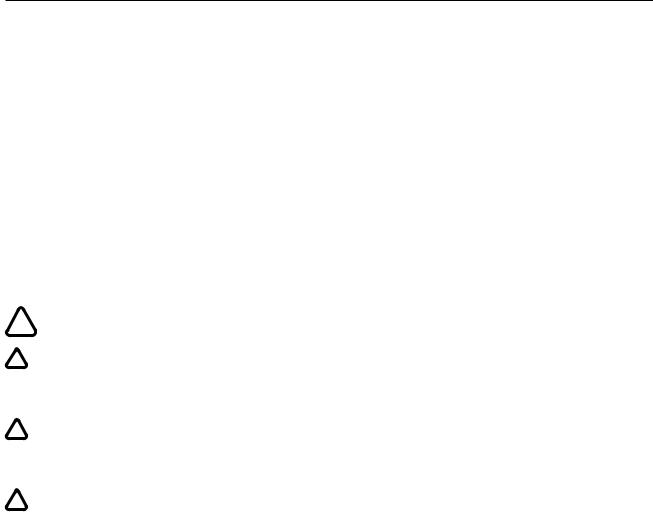
Safety
Recognize Safety Information
This irrigation equipment can be powered by high voltage, which can be extremely dangerous if used improperly. For maximum safety and optimum performance of the machine, all owner/operators and maintenance personnel must read and understand the owner/operator manual(s), all safety messages in this manual and safety signs/decals on the machine before operating this equipment.
Anyone assembling, operating, servicing or maintaining this machine must read and understand all operation, maintenance, troubleshooting, testing, installation, assembly instructions and all safety messages in this manual before operating the machine or beginning any maintenance, troubleshooting, testing, installation or assembly of components.
These instructions alert you to certain things you should do carefully; if you don’t, you could hurt yourself or others, hurt the next person who operates the equipment, or damage the equipment.
Safety Messages
Safety messages in this manual are preceded by the hazard symbol and one of three words: DANGER, WARNING or CAUTION. These messages alert you to potential hazards that could hurt you or others and or cause property damage.
!This HAZARD SYMBOL is used to alert you to information about unsafe actions or situations, and may be followed by the word DANGER, WARNING or CAUTION.
!DANGER
The HAZARD SYMBOL used with the word DANGER describes immediate hazards that can result in severe personal injury or death.
! WARNING
The HAZARD SYMBOL used with the word WARNING describes unsafe actions or situations that can result in severe injury, death and/or major equipment or property damage.
! CAUTION
The HAZARD SYMBOL used with the word CAUTION describes unsafe actions or situations that can result in injury, and/or minor equipment or property damage.
Information Messages
Important information messages in this manual are preceded by the word NOTE.
NOTE
The word NOTE is used to alert you to information that describes procedures or tips to help you install, operate or maintain your equipment properly.
9

Safety
Use of Personal Protective Equipment
•People working in areas where there are potential electrical hazards must use, personal protective equipment that is appropriate for the specific parts of the body to be protected and for the work to be performed. Refer to U.S. Occupational Safety & Health Administration (OSHA) Regulations (Standards - 29 CFR) Safeguards for personnel protection. - 1910.335, or applicable national, state or local regulations, for additional information.
•Personal protective equipment must be maintained in a safe, reliable condition and periodically inspected or tested.
•Protective shields, protective barriers, or insulating materials must be used to protect each person from shock, burns, or other electrically-related injuries while that person is working near exposed energized parts which might be accidentally contacted or where dangerous electric heating or arcing might occur. When normally enclosed live parts are exposed for maintenance or repair, they must be guarded to protect unqualified persons from contact with the live parts.
•Safety signs and tags. Safety signs, safety symbols, or accident prevention tags must be used where necessary to warn people about electrical hazards which may endanger them.
Conductive Materials and Equipment
Materials and equipment that can conduct electricity must be handled in a way that will prevent them from contacting energized power lines, exposed conductors or circuit parts.
•When handling long conductive objects (such as but not limited to truss rods, pipes, angles and ladders) in areas with energized power lines, exposed conductors or circuit parts, work practices (such as the use of insulation, guarding, and material handling techniques) must be used to minimize the hazard.
•Portable ladders must have non-conductive side rails.
•Do not wear conductive articles of jewelry and clothing (such as but not limited to watch bands, bracelets, rings, key chains, necklaces, metalized aprons, cloth with conductive thread, or metal headgear) that could come in contact with energized power lines, exposed conductors or circuit parts.
Fall Protection
Identify potential fall hazards and determine if fall protection equipment is appropriate for the task, before beginning the work. Pay attention to hazards associated with routine and non-routine tasks. Inspect fall protection equipment (harnesses, lanyards) and devices (guardrails, tie-off points) before each use. Use fall protection equipment if required for the job. Be sure the fall protection equipment is right for the task, fits properly, and is in good condition. Refer to U.S. Occupational Safety & Health Administration (OSHA) Regulations Standards - 29 CFR 1926.500, 1926.501 and 1926.502, or applicable national, state or local regulations for more information.
•When using scaffolds, make sure there is proper access, full planking, stable footing, and guard railing.
•When using a boom lift, keep feet firmly on the platform of a boom lift, use fall protection equipment tied-off at all times to the guardrail or tie-off point.
•When using a ladder, make sure the ladder is non-conductive and the correct size for the task. Read the ladder user instructions and be sure the ladder is in good condition. Make sure ladder is set on stable footing and at the correct angle.
10
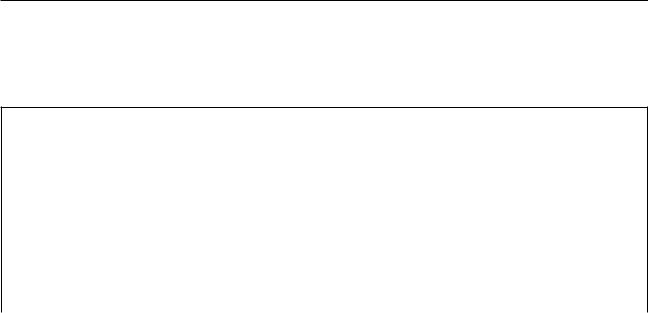
Safety
Minimum Working Clearance
To reduce the risk of injury, all persons require adequate working clearance around the electrical panel or other electrical equipment. The table below identifies the minimum working clearance needed. Refer to U.S. Occupational Safety & Health Administration (OSHA) Regulations (Standards - 29 CFR) Safeguards for personnel protection. -1910.303(g)(1)(i), or any other applicable national, state or local regulations, for additional information.
MINIMUM WORKING CLEARANCE 0-600 VOLTS
WIDTH |
HEIGHT |
MINIMUM WORKING CLEARANCE |
|||
OF WORKING |
OF WORKING |
IN FRONT OF ELECTRICAL PANEL/EQUIPMENT |
|||
CLEARANCE |
CLEARANCE |
|
|
|
|
EXPOSED LIVE PARTS |
EXPOSED LIVE PARTS |
EXPOSED LIVE PARTS |
|||
AREA |
AREA |
||||
ON ONE SIDE OF WORK |
ON ONE SIDE OF WORK |
ON ONE SIDE OF WORK |
|||
|
|
||||
|
|
SPACE AND NO LIVE |
SPACE AND LIVE |
SPACE AND EXPOSED |
|
|
|
GROUNDED PARTS ON |
GROUNDED PARTS ON |
LIVE PARTS ON THE |
|
|
|
THE OTHER SIDE. |
THE OTHER SIDE. |
OTHER SIDE. |
|
|
|
|
|
|
|
30 in (760 mm) |
78 in (1980 mm) |
36 in (915 mm) MINIMUM |
42 in (1065 mm) MINIMUM |
48 in (1220 mm) MINIMUM |
|
MINIMUM OR |
MINIMUM OR |
|
|
|
|
WIDTH OF |
HEIGHT OF |
|
|
|
|
ENCLOSURE, |
ENCLOSURE, |
|
|
|
|
WHICH EVER IS |
WHICH EVER IS |
|
|
|
|
GREATER |
GREATER |
|
|
|
|
|
|
|
|
|
|
Concrete, brick or tile walls shall be considered as grounded.
Qualified Person
A Qualified Person is one who, by possession of a recognized degree, certificate, or professional standing, or who by extensive knowledge, training, and experience, has successfully demonstrated his/her ability to solve or resolve problems related to the subject matter, the work, or the project.
Only qualified persons may work on electric circuit parts or equipment that have not been de-energized.
Refer to U.S. Occupational Safety & Health Administration (OSHA) Regulations Standards - 29 CFR 1926.32(m) and 1910.333, or applicable national, state or local regulations for additional information.
Irrigation Equipment near Airports and Crop Dusting Aircraft
•If any part of the irrigation machine comes within 3200 ft (975 m) of an airport runway, especially the approach (ends) of the runway, additional warning markers may be required. In the United States, CFR Title 14, Chapter I, Subchapter E, Part 77 – Safe, Efficient Use, and Preservation of the Navigable Airspace describes when marking is needed.
This document is available at: www.ecfr.gov
•Marking requirements vary depending on the location of the irrigation equipment relative to the runway, the type of airport (Civil, Military, or Heliport) and other factors. Contact the local airport authority for guidance and specific recommendations. In the United States, guidelines for marking structures near airports are published by the Federal Aviation Administration in Advisory Circular AC 70/7460-1L – Obstruction Marking and Lighting.
Available here: www.faa.gov/regulations_policies/advisory_circulars
•For irrigation machines near private or unregulated airfields, including farm-based airstrips, Valley strongly recommends complying with the same standards and requirements as Civil airports as shown in Part 77.
•Regulations vary by country, contact your local aviation authority for guidance.
Overhang cables, including overhang back cables are a particular danger. In locations where low-flying aircraft are likely, such as within 1,500 ft (457 m) of an end of an airport runway, or where crop dusting aircraft are common, Valley recommends adding obstruction markers to overhang cables to improve their visibility.
For large overhangs (36 ft / 10.97 m Heavy Duty and longer), five 12 in (300 mm) or 20 in (500 mm), aviation orange marker balls are sufficient. One near the rabbit ears, two in the middle of the back cables and two in the middle of the highest overhang cables. Refer to Section 3.5 in AC70/7460-1 for additional details. Aviation marker balls are available online and from a variety of aviation and airport safety equipment providers.
11

Safety
Overhead Power Lines
Assembling, towing or transporting irrigation machine components such as but not limited to the pivot point, linear cart, span/drive unit assemblies, overhangs and/or corner assemblies underneath or near power lines is extremely dangerous because of the risk of electrocution.
Operating equipment that elevates irrigation machine components, such as but not limited to an aerial lift or crane, near power lines is extremely dangerous because of the risk of electrocution. Only qualified personnel should operate this type of equipment. Before operating the equipment, qualified personnel must read the equipment manufacturers’ operating and safety instructions.
Refer to U.S. Occupational Safety & Health Administration (OSHA) Regulations (Standards - 29 CFR) Cranes and derricks. - 1926.550, or any other applicable national, state or local regulations for additional information.
•Always presume that any overhead power line is an energized line unless and until the person(s) owning the line and/or the electrical utility authorities indicate that it is not an energized line and it has been visibly grounded.
•Before operating any equipment near any power line make sure the line has been de-energized and visibly grounded at the point of work.
•Electrocution can occur without touching an electrical power line. Electricity, depending on the magnitude, can jump or become induced into equipment or conductive materials that come in close proximity to, but do not touch a power line. High wind, lightning, wet ground and other environmental conditions will increase the possibility of electrocution and require additional consideration.
•Transmitter towers can induce the equipment or materials being handled with an electrical charge. Before working or operating equipment near transmitter towers, make sure the transmitter is de-energized.
•Select the location where the span/drive unit will be assembled to ensure that neither the irrigation machine, or the equipment used during the assembly process, will violate the minimum clearance guidelines.
•Never operate equipment or allow the load, ropes or tag lines within 10 ft (3.05 m) of any power line rated 50 kV or lower whether it is energized or not. For lines rated over 50 kV, the minimum clearance shall be 10 ft (3.05 m) plus 0.4 inch (1.1 cm) for each kV over 50 kVs.
•Never assemble, tow, transport or allow irrigation machine components underneath or within 10 ft (3.05 m) of any power line rated 50 kV or lower whether it is energized or not. For lines rated over 50 kV, the minimum clearance shall be 10 ft (3.05 m) plus 0.4 inch (1.1 cm) for each kV over 50 kVs. Overhang support angles, cables and spinner drive components regularly extend 10 ft to 12 ft (3.1 m to 3.7 m) above the irrigation pipeline (span).
•Use barricades to identify areas where interference with overhead power lines could occur. Keep the assembly, towing or transporting of irrigation machine components and the operation of equipment including load, ropes or tag lines away from any power line, in the distances described above, whether the line is energized or not.
•Always designate a person to observe clearance between the power line and all equipment being operated or moved in order to give timely warning for all operations to STOP if the minimum clearance is violated.
12

Safety
Minimal Lockout / Tagout Procedure
The following procedure establishes the minimum requirements for the lockout of energy isolating devices whenever maintenance or servicing is done on machines or equipment. It is used to ensure that the machine or equipment is stopped, isolated from all potentially hazardous energy sources and locked out before personnel perform any servicing or maintenance where the unexpectedly energized or start-up of the machine or equipment or release of stored energy could cause injury. All personnel, upon observing a machine or piece of equipment which is locked out to perform servicing or maintenance shall not attempt to start, energize, or use that machine or equipment.
When the energy isolating devices are not lockable, tagout should be used and affected personnel must wear full personal protection.
Refer to U.S. Occupational Safety & Health Administration (OSHA) Regulations (Standards - 29 CFR) Typical minimal lockout procedures - 1910.147 App A, or applicable national, state or local regulations, for additional information.
Sequence of Lockout
1.Notify all affected personnel that servicing or maintenance is required on a machine or equipment and that the machine or equipment must be shut down and locked out to perform the servicing or maintenance.
2.The authorized personnel shall identify the type and magnitude of the energy that the machine or equipment utilizes, shall understand the hazards of the energy, and shall know the methods to control the energy.
3.If the machine or equipment is operating, shut it down by the normal stopping procedure (depress the stop button, open switch, close valve, etc.).
4.De-activate the energy isolating device(s) so that the machine or equipment is isolated from the energy source(s).
5.Lock out the energy isolating device(s) with assigned individual lock(s).
6.Stored or residual energy (such as that in capacitors, springs, elevated machine members, rotating flywheels, hydraulic systems, and air, gas, steam, or water pressure, etc.) must be dissipated or restrained by methods such as grounding, repositioning, blocking, bleeding down, etc.
7.Ensure that the equipment is disconnected from the energy source(s) by first checking that no personnel are exposed, then verify the isolation of the equipment by operating the push button or other normal operating control(s) or by testing to make certain the equipment will not operate.
!CAUTION
•RETURN OPERATING CONTROL(S) TO NEUTRAL OR “OFF” POSITION AFTER VERIFYING THE ISOLATION OF THE EQUIPMENT.
8.The machine or equipment is now locked out.
!DANGER
•WHEN PERSONNEL WILL BE EXPOSED TO CIRCUIT ELEMENTS AND ELECTRICAL PARTS, A QUALIFIED PERSON MUST USE TEST EQUIPMENT TO VERIFY THAT THE CIRCUIT ELEMENTS AND EQUIPMENT PARTS OF THE EQUIPMENT ARE DE-ENERGIZED.
Restoring Equipment to Service
When the servicing or maintenance is completed and the machine or equipment is ready to return to normal operating condition, the following steps shall be taken:
1.Check the machine or equipment and the immediate area around the machine to ensure that non-essential items are removed and that the machine or equipment components are operationally intact.
2.Check the work area to ensure that all personnel are safely positioned or removed from the area.
3.Verify that the controls are in neutral.
4.Remove the lockout devices and re-energize the machine or equipment.
5.Notify affected personnel that the servicing or maintenance is completed and the machine or equipment is ready to be used.
13

Safety
14
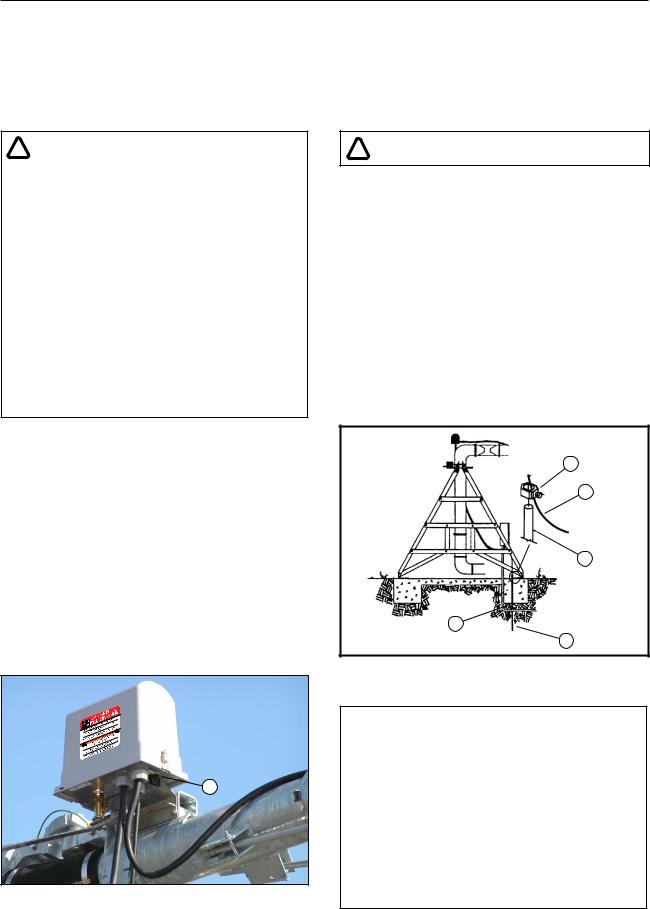
Safety
Operate Safely
Valley Irrigation machines are designed with safety in mind. However, if this machine is operated incorrectly, it may pose a safety threat to the operator. A good safety program is much like a chain, it is only as strong as its weakest link. The manufacturer, dealer, and operator must maintain and improve all safety programs. Following is a list of safety operating tips which you and all other persons servicing or operating the machine must read and understand:
!CAUTION
•DO NOT OPERATE THIS MACHINE WITHOUT FIRST READING THE OWNER’S MANUALS FOR THE MACHINE.
•READ ALL SAFETY MESSAGES IN THIS MANUAL AND SAFETY SIGNS ON THE MACHINE.
•DO NOT LET ANYONE OPERATE THIS MACHINE WITHOUT PROPER INSTRUCTIONS.
•UNAUTHORIZED MODIFICATIONS MAY IMPAIR THE FUNCTION AND/OR SAFETY OF THE MACHINE.
•IF YOU DO NOT UNDERSTAND ANY PART OF THIS MANUAL, CONTACT YOUR VALLEY DEALER.
EMPLOYEE INSTRUCTION ON SAFETY
It is very important to instruct your employees on the safe use of this equipment at the time of their initial assignment to operate it. DO NOT let anyone operate this equipment without proper instructions.
Safety training should be presented annually and the service manager should ensure employees fully understand the safety messages and what to do in case of emergencies.
EMERGENCY STOPPING
The machine can be stopped at any time at any tower by turning the disconnect switch, located underneath the tower box, to the OFF position. Refer to Figure 15-1.
1
Figure 15-1 1. Disconnect Switch
! WARNING
PROPER GROUNDING
DO NOT attempt to start the machine until the electrical service is properly installed and grounded by a qualified electrician as per the electrical standards. Refer to Figure 15-2.
If the power supplied to the machine is not grounded properly, severe injury, or death can result should an electrical malfunction occur.
It is your responsibility to ensure that your power supplier and/or electrical contractor has grounded the irrigation machine as required by the National Electrical Code and by applicable local electrical codes. If a machine is properly grounded and fuse sizing is correct, there is extremely low probability of an individual being injured by electrical shock.
5
4
3
2
1
Figure 15-2 1. |
Ground Rod Installation |
4. |
Copper Ground Wire |
2. |
Service Conductor |
5. |
Clamp |
3. |
Copper Ground Rod |
|
|
NOTE
•All 480 VAC, 60 Hz (380 VAC, 50 Hz) power supply services MUST be a 4 conductor service.Three 480 VAC (380 VAC) power lines and one ground conductor which is as large as the power carrying conductors for that service.
•Each time a towable machine is moved, the ground wire MUST be reattached to the ground rod and checked for electrical integrity before restarting the machine.
15

Safety
Operate Safely (Continued)
! DANGER
DISCONNECT POWER WHEN SERVICING ALWAYS disconnect electrical power before servicing or performing maintenance to the machine.
If you are going to perform maintenance on the machine, YOU MUST shut off and lock the main power disconnect as shown below. Refer to Figure 16-1.
1
2
Figure 16-1 1. Main Power Disconnect 2. Lock
The blue (OSHA safety color code) tag shown below should also be filled out and attached to the disconnect after locking. Refer to Figure 16-2.
The tag should reveal the name of a person to contact before restoring power to the machine.
DANGER |
DO NOT
OPERATE
SIGNED BY: ____________________________________
DATE:____________________________________
0992009
FRONT
Figure 16-2
DANGER |
DO NOT REMOVE
THIS TAG
REMARKS: ____________________________________
________________________________________________
________________________________________________
________________________________________________
________________________________________________
SEE OTHER SIDE
BACK
! CAUTION
QUALIFIED SERVICE PERSONNEL
If you do not understand electricity or other parts of the machine, have qualified service personnel perform any hazardous repairs or maintenance.
! CAUTION
GUARD ALL POWER TAKE-OFF DRIVES
This includes all belt and power line drives.
Replace any guards and shields removed for maintenance.
! WARNING
MARK AND GUARD ALL POWER LINES
Do NOT deep rip or chisel near the buried power service wires.
Do NOT deep rip in a circle at the drive unit. The deep chisel track will cause severe stresses on the structure.
If you do deep rip your field, run the machine with the percent timer at 100% for the first revolution.
! WARNING
SUSPECTED SHORT CIRCUITS
DO NOT touch the machine if you suspect a shortcircuit situation. Call a qualified electrician or an authorized Valley dealer immediately.
Circumstances which may cause you to suspect hazardous voltage situations may include:
•Physical damage to the machine or span cable
•Recent electrical storms (lightning)
•Unusual operating characteristics of the machine
If you suspect a short circuit due to feeling a rippling tingle when touching the machine, DO NOT touch the machine again. Call a qualified electrician or an authorized Valley dealer immediately.
16
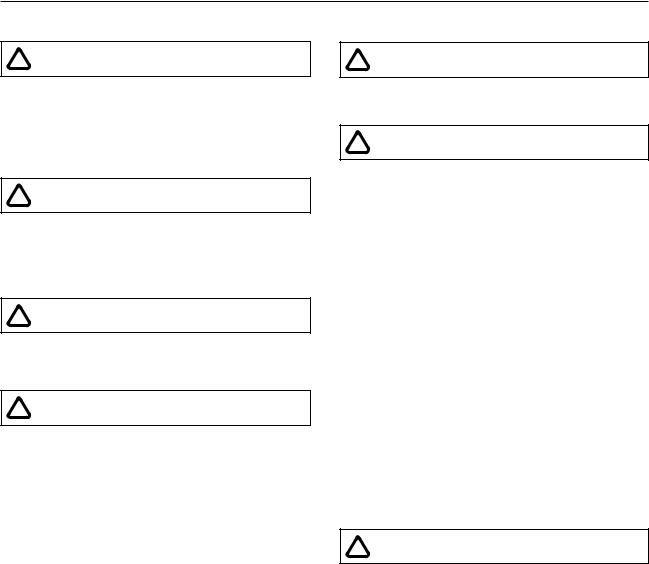
Safety
Operate Safely (Continued)
! WARNING
LIGHTNING AND THE MACHINE
Stay away from the machine during an electrical storm. An irrigation machine makes a good path to earth. It is also probably the tallest object in the field, which makes it a good lightning receptor!
! CAUTION
DO NOT OVERSIZE FUSES
Fuses are sized for the protection of a specific machine.
Be certain you have the proper fuse sizes in place before initial start-up and when replacing fuses.
! CAUTION
PLUG - IN CONNECTORS
Disconnect power before connecting or disconnecting any plug-in connectors.
! CAUTION
DO NOT OPERATE AT FREEZING TEMPERATURES
Spraying water has a cooling effect and water will freeze even though the air temperature is slightly above freezing.
Shut the machine down at 40 degrees Fahrenheit (4.5 degrees Celsius). Do not operate machine when temperature is below 40° F (4.5° C).
•DAMAGE TO EQUIPMENT RESULTING FROM FREEZE-UP IS NOT COVERED UNDER WARRANTY.
•IT IS IMPORTANT TO MAKE SURE ALL PIPE DRAINS FUNCTION PROPERLY TO PREVENT PIPELINE FREEZE-UP DURING COLD WEATHER.
! CAUTION
AVOID HIGH PRESSURE WATER STREAMS
Avoid body contact with high pressure water streams.
! WARNING
AVOID CHEMICALS
Avoid exposure to sprinkler spray while chemicals are being injected into the water. Read EPA Label Improvement Program (PR Notice 87-1) and all instructions for chemical applications.
If you plan on chemigating, make certain you have complied with state or local regulations in regard to safety equipment, certification, operation and calibration of the injector pump. Make certain you have first aid and fresh water available in case of an accident. You must also be familiar with the correct cleanup procedures in case of a spill.
•USE OF PROTECTIVE CLOTHING IS RECOMMENDED WHEN HANDLING CHEMICALS. SAFETY GLASSES, GLOVES, AND PROTECTIVE OUTERWEAR SHOULD BE WORN WHEN HANDLING CHEMICALS.
•CONTAMINATION OF THE WATER SUPPLY MAY OCCUR IF EFFECTIVE SAFETY DEVICES ARE NOT INSTALLED/USED IN CONNECTION WITH INJECTION EQUIPMENT FOR CHEMIGATION.
! DANGER
DRIVE SHAFTS START WITHOUT WARNING
An electric motor on each tower of the center pivot powers two or more drive shafts connected to wheel gear drives. These drive shafts start and stop without warning.
•DO NOT TOUCH ROTATING DRIVE SHALT OR SHIELD, CLOTHING OR LIMBS MAY BECOME ENTANGLED, RESULTING IN SEVERE INJURY.
•DO NOT SERVICE THE MACHINE UNTIL THE MAIN DISCONNECT IS LOCKED IN THE OFF POSITION.
•ALWAYS REPLACE DRIVE SHAFT SHIELDS AFTER SERVICING.
•DRIVE SHAFT SHIELDS MUST ALWAYS BE IN PLACE WHEN OPERATING THE MACHINE.
17
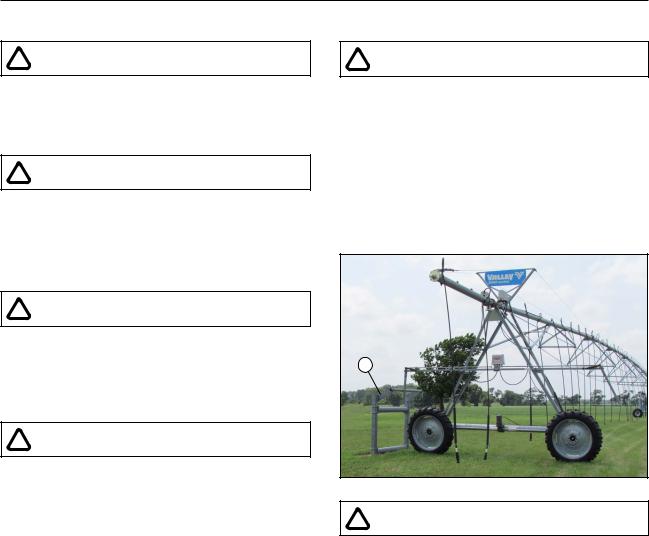
Safety
Operate Safely (Continued)
! CAUTION
CHECK WHEEL TRACKS BEFORE STARTING
Make sure all objects, livestock or persons are clear of the machine before starting. Drive trains are powerful and can climb over vehicles, equipment, etc.
! CAUTION
KEEP CHILDREN AWAY
Pivots are NOT playground equipment.
Prevent children from playing or climbing around on the machine. This can be extremely dangerous, especially if the machine is operating.
! CAUTION
CHECK MACHINE DIRECTION
DO NOT operate the machine if it moves in the direction opposite to that which was chosen.
Forward should be clockwise, and reverse should be counter-clockwise.
! CAUTION
KEEP WATER OFF ROADWAYS
It is against the law in most states to allow water to spray on state and county roadways. This is a serious hazard to passing motorists.
If end guns are used, make sure you read and understand the correct procedures for setting the on and off positions to avoid watering the roadways.
If an end gun is watering a roadway, immediately discontinue use and adjust the shutoff setting or call your Valley dealer to repair the end gun shut off mechanism.
! CAUTION
AUTO REVERSE OPERATION SAFETY
If the machine reverses direction at a roadway or a physical object such as a building, tree line, power pole, etc., then you MUST provide a backup device to stop the machine if the reversing mechanism were to fail. Refer to Figure 18-1.
Contact your Valley dealer for more information concerning physical barricades for machines under these circumstances.
1
Figure 18-1 1. Physical Barricade
! CAUTION
PROPER USE OF THE SAFETY OVERRIDE
Caution MUST be taken by the operator when using the safety override function as it will bypass or disable all of the machine’s automatic safety shutdown circuits.
•NEVER DEPRESS AND HOLD THE START/STOP SAFETY OVERRIDE SWITCH IN THE START POSITION FOR MORE THAN 3 TO 5 SECONDS.
If the machine is not in full view by the operator, do not use the Safety Override function.
The operator MUST inspect the entire machine between each safety override start attempt.
Repeated safety override start attempts can cause severe structural damage.
Call your Valley dealer if the machine fails to start.
18

Safety
Safety Decals
These Danger, Warning, and Caution decals appear in various locations on a Valley irrigation machine. You MUST familiarize yourself and other operator’s with these safety decals. For replacement of any decal, contact your local Valley dealer.
19
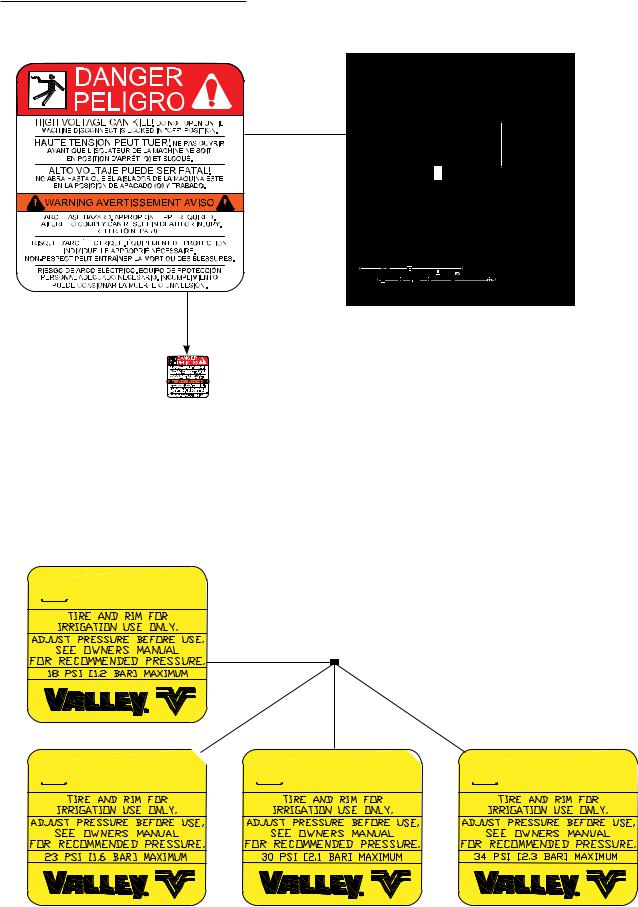
Safety
Safety Decals (Continued)
 WARNING
WARNING
 WARNING
WARNING
 WARNING
WARNING
 WARNING
WARNING
20
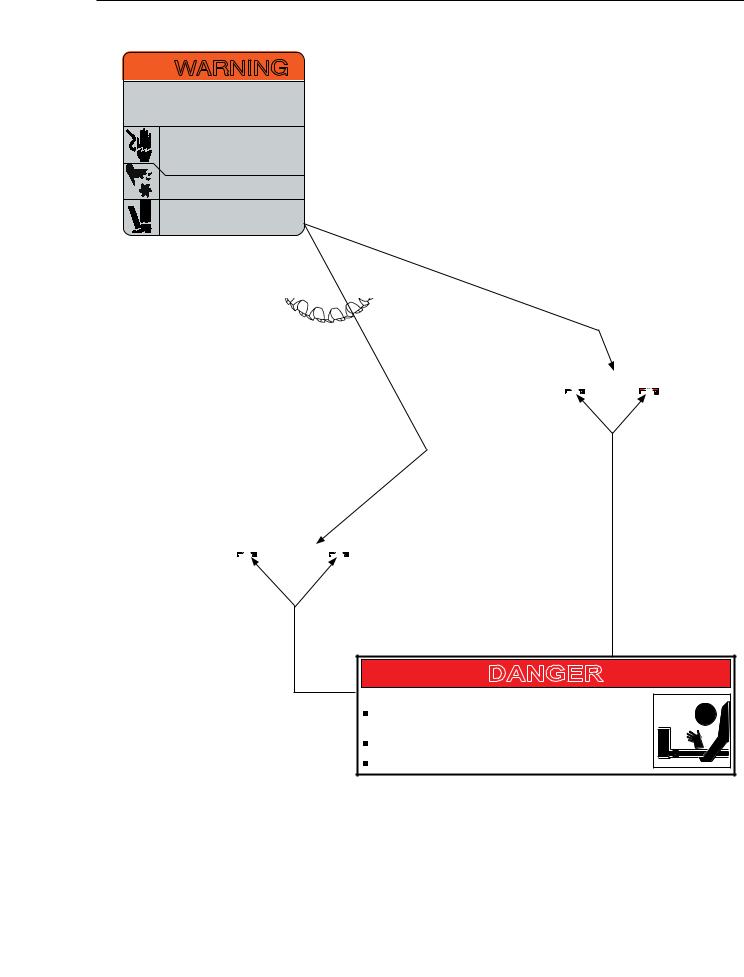
Safety
Safety Decals (Continued)
 WARNING
WARNING
Improper installation of this motor may result in fire, explosion, electrical shock or other personal injuries. Read operating instructions
Disconnect power before maintenance. Open all circuits before removing conduit box cover. Be sure motor is properly grounded per local and national codes.
Do not place fingers or objects near openings.
Do not use eye bolts or lifting hooks to lift anything except the product.
 DANGER
DANGER 
Drive Shaft Starts Without Warning!
Do not touch rotating drive shaft or shield. Clothing or limbs may become entangled, resulting in severe injury.
Do not service until machine is locked in the off position.
Always replace drive shaft shield after servicing.
21

Safety
22
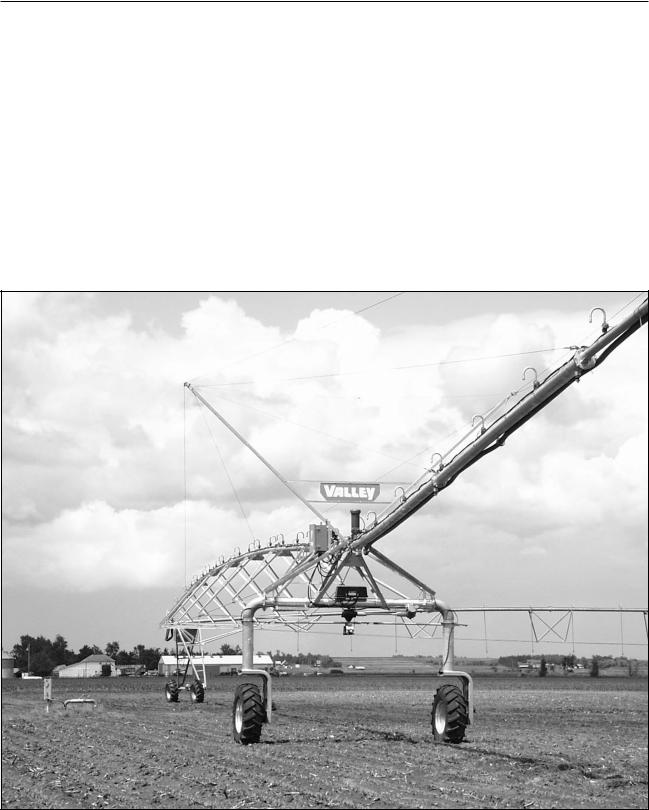
Overview
Introduction
Understanding the operation of the corner machine requires understanding how the Center Pivot operates. Refer to the Valley 8000, 8120, 7000 Center Pivot Owner’s Manual for a complete explanation of the operation of the Valley Center Pivot. Operators of Valley Precision Corner machines retrofitted to earlier models of Valley Center Pivots or other brands of Center Pivots must use the appropriate Center Pivot owners/operators manual in conjunction with this manual.
Overview
The Valley Corner is a pivoting extension (185 ft or 205 ft span, 82 ft overhang and steerable drive unit) of the Center Pivot machine. As the Center Pivot enters a corner of the field, the corner arm moves or swings outward to extend into the corner. At various points during extension, sprinklers or spray nozzles begin turning on in a specific sequence to maintain optimum uniformity. This allows the corners or areas outside the Center Pivot to be uniformly irrigated. As the corner arm reaches full extension, the end gun turns on to irrigate the area beyond the end of the overhang. When the corner approaches the boundary of the field, the end gun shuts off and the corner begins moving inward. At various positions during retraction, the sprinklers or spray nozzles begin to shut off in a specific sequence. See Figure 23-1.
Figure 23-1
23
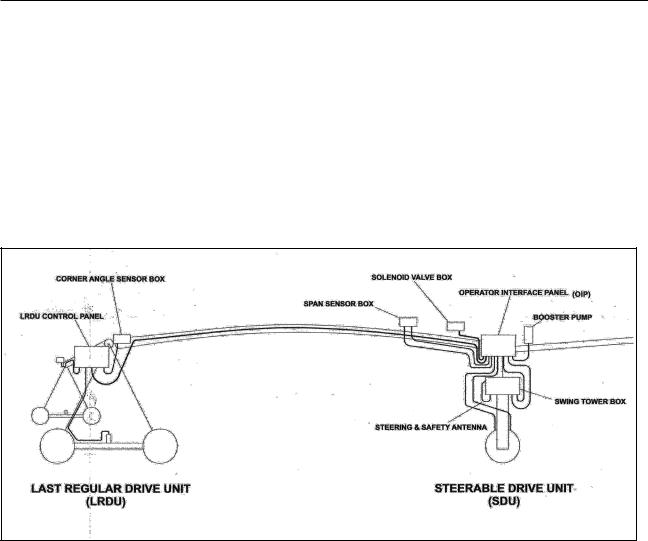
Overview
Machine Components - Structural
The corner structural hardware consists of a 185 ft or 205 ft span of 6 5/8 in pipe with 30 in coupler spacing, trussing and truss rods and an 82 ft overhang. A steerable drive unit (SDU) supports the span and overhang. See Figure 24-1.
The steerable drive unit utilizes a drive motor and gearbox on each drive unit leg. A steering motor and a steering gearbox, mounted to the SDU base beam, rotate the drive unit legs.
The corner connects to the basic Center Pivot at the Last Regular Drive Unit through a ball and socket. This type of attachment allows movement in all directions for optimum flexibility as the LRDU and SDU negotiate varying terrain.
The drive for the LRDU is a 34 RPM helical motor/center drive gearbox while the SDU incorporates 56 RPM worm gear wheel-drive motor/gearboxes. Each of these drives are powered from variable speed motor controllers (Dinverters). This improves reliability and reduces maintenance, while extending the life of the drives.
Figure 24-1
Machine Components - Operational
The Valley Precision Corner utilizes a number of control boxes and other components for movement, guidance and sprinkler package sequencing. The following is a listing of these components and their basic function. See Figure 24-1 for operational component location.
24
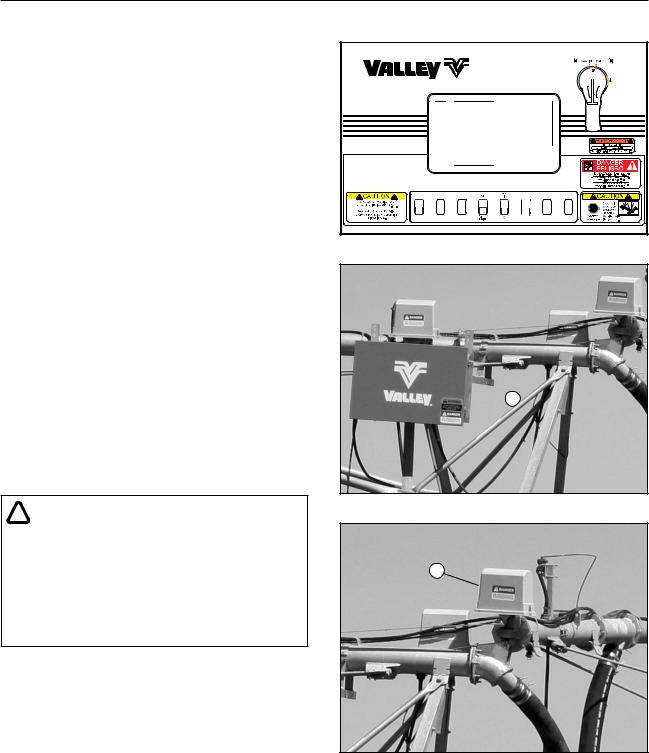
Overview
Main or Pivot Control Panel
The Valley Precision Corner machine, used in conjunction with an 8000 Valley Center Pivot, is equipped with one of three main control panels: the Standard, the Select or the Pro. Each of these provides the basic control functions for operation of the corner machine. These include controls for starting and stopping the machine, selecting the direction of operation and setting the speed for applying the desired amount of water to the field. See Figure 25-1.
A SERVICE/RUN rocker switch is included with the inner panel door controls. This switch is used for corner machine diagnostics and for use of the Operator Interface Panel.
The panel contains an oscillator which generates a low voltage, high frequency signal in the buried guidance wire.
Control panels for earlier Valley Center Pivots or pivot panels for other brands of Center Pivots are retrofitted with the appropriate components and controls for use with the Valley Precision Corner.
Last Regular Drive Unit Control Panel
The Last Regular Drive Unit (LRDU) control panel is responsible for supplying the Last Regular Drive Unit drive motor with the appropriate electrical power to achieve the desired machine operating speed. See Figure 25-2.
!WARNING
•THE LAST REGULAR DRIVE UNIT CONTROL PANEL CONTAINS NO OPERATOR CONTROLS. THE ELECTRICAL COMPONENTS CAN ONLY BE SERVICED BY VALLEY SERVICE TECHNICIANS. THE OPERATOR MUST NEVER ATTEMPT TO SERVICE OR TROUBLESHOOT THIS PANEL.
Corner Angle Sensor Box
The Angle Sensor Box is located at the ball and socket joint between the LRDU and the first pipe of the corner. The Angle Sensor Box utilizes a potentiometer which monitors the angle between the Center Pivot and the corner machine.The angle between the two is used in conjunction with other information to properly sequence the sprinklers on and off as the corner extends and retracts. See Figure 25-3.
Angle sensor software also monitors the extension and retraction angle to assure the corner arm does not overextend or under-retract. If the angle of the corner reaches either of these safety limits, the machine will shut off.
AUTO |
SERVICE |
REVERSE |
|
AUTO |
RUN |
STOP |
Figure 25-1 Pivot Control Panel
 1
1
Figure 25-2 1. LRDU Control Panel
1
Figure 25-3 1. Corner Angle Sensor Box
25

Overview
Operator Interface Panel (OIP)
The Operator Interface Panel (OIP) is positioned above the steerable drive unit base beam. It includes a microprocessor that receives a continuous signal from the span sensor box and monitors any movement or change in speed of the LRDU. The processor then directs, as necessary, a variable speed drive motor controller to constantly adjust the RPM of the SDU drive motors.This assures the SDU will maintain uniform movement with the LRDU. See Figure 26-1.
In addition, the microprocessor monitors the position of the corner in relation to the Center Pivot through signals from the angle sensor potentiometer. This information is used to determine the area being irrigated by the corner at any point or position in the field. Based on this information, signals are sent to the appropriate solenoid valves at the Solenoid Valve Box to turn on or turn off the appropriate sprinklers. This provides the optimum uniform water distribution at any point around the field.
The Operator Interface Panel provides a number of benefits to the operator and to the Valley service technician. The Operator Interface Panel provides information to the operator or Valley service technician on the operational status of the corner and diagnostics to aid in troubleshooting should a malfunction occur with the corner.
Swing Tower Box
The Swing Tower Box includes a Corner Guidance Box. The guidance box interprets the signal from the buried guidance wire that’s received through the steering and reference antenna. It then directs the steerable drive unit to turn one direction or another to maintain a position directly over the guidance wire. See Figure 26-2.
The guidance box also monitors the signal strength being received by the antenna. If the SDU moves too far away from the guidance wire, the signal strength drops below a preset level and relay contacts in the guidance box open the safety circuit causing the corner machine to shut down.
The Swing Tower Box includes a cam and steering limit switches to prevent mechanical damage to steering components should a malfunction occur. A steering safety switch backs up the steering limit switches should they not stop an oversteer.
1
Figure 26-1 1. Operator Interface Panel (OIP)
1
Figure 26-2 1. Swing Tower Box
26
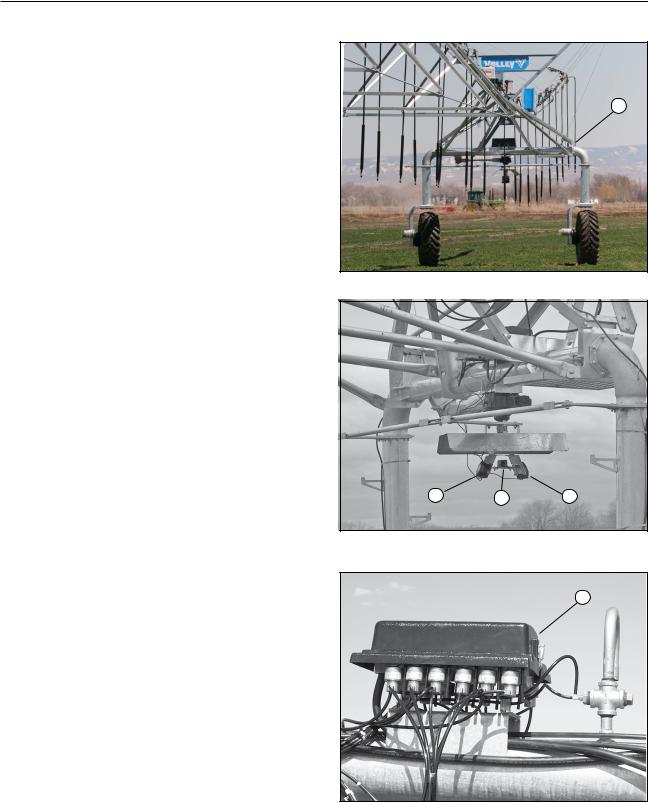
Overview
Steerable Drive Unit
The Steerable Drive Unit (SDU) is located at the end of the corner span. The steering motor and steering gearbox are located on the basebeam. A single steering gearbox is standard. There are two offset legs, one on each end of the basebeam. At the bottom of each offset leg is a Corner Drive Wheel Gearbox. An optional Corner DualDrive tire configuration is available. See Figure 27-1.
Steering and Safety/Reference Antenna
The steering and safety antenna are located on the steering arm directly below the center of the Steerable Drive Unit (SDU) base beam. The safety (reference) antenna and the forward or reverse steering antenna receive the signal from the buried guidance wire and send an electrical signal to the guidance receiver in the Swing Tower Box. The signal is monitored by the receiver which keeps the corner over the guidance wire or shuts the machine down should a malfunction occur causing the corner to move outside the guidance safety limits. See Figure 27-2.
Solenoid Valve Box
The Solenoid Valve Box converts electrical signals from the SDU control panel processor into water hydraulic control for the sprinkler package pressure differential valves. This allows the appropriate sprinklers to turn on and off at the appropriate points during extension and retraction. See Figure 27-3.
1
Figure 27-1 1. Steerable Drive Unit
1 |
2 |
1 |
Figure 27-2 1. Steering Antenna
2. Safety/Reference Antenna
1
Figure 27-3 1. Solenoid Valve Box
27
